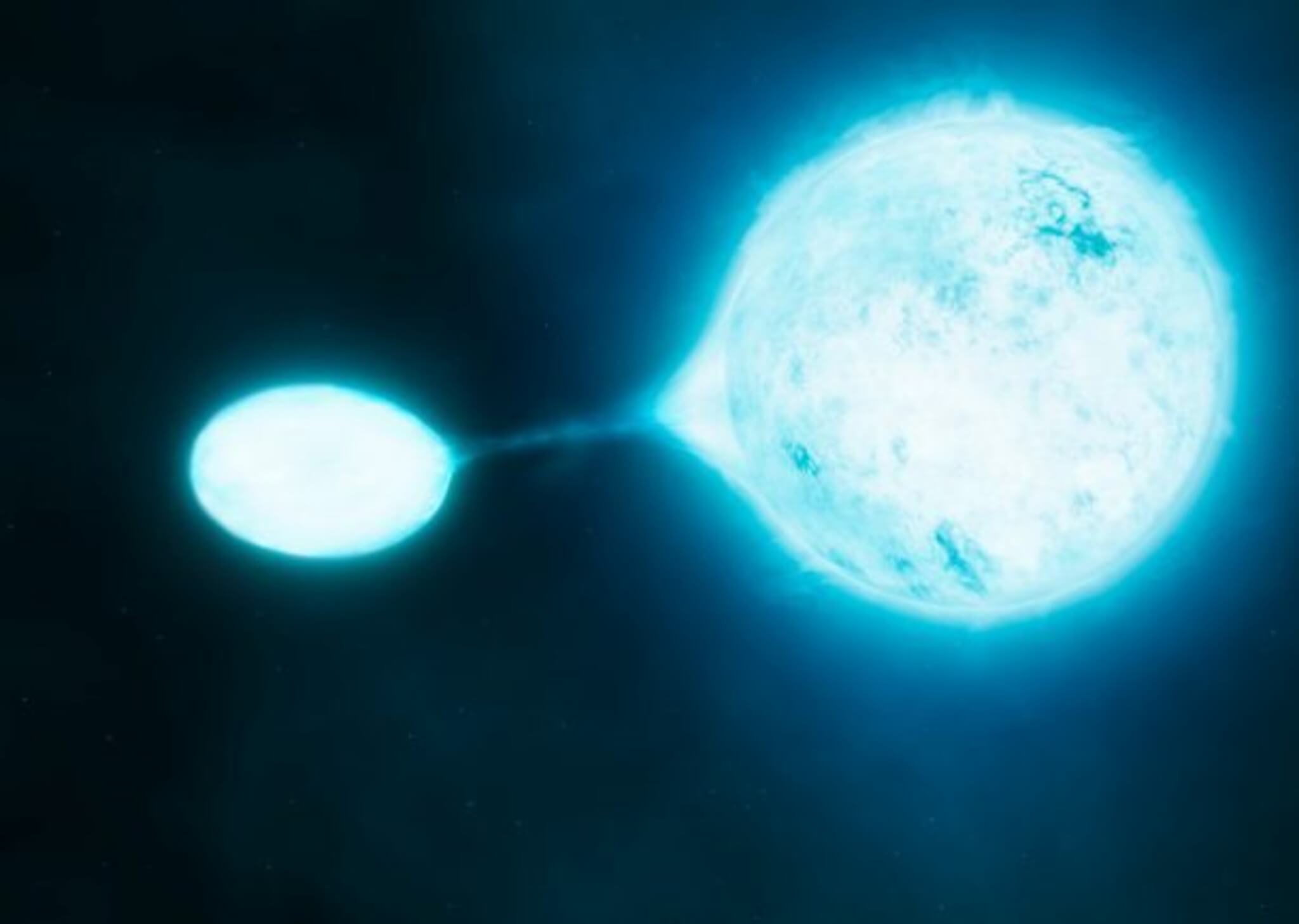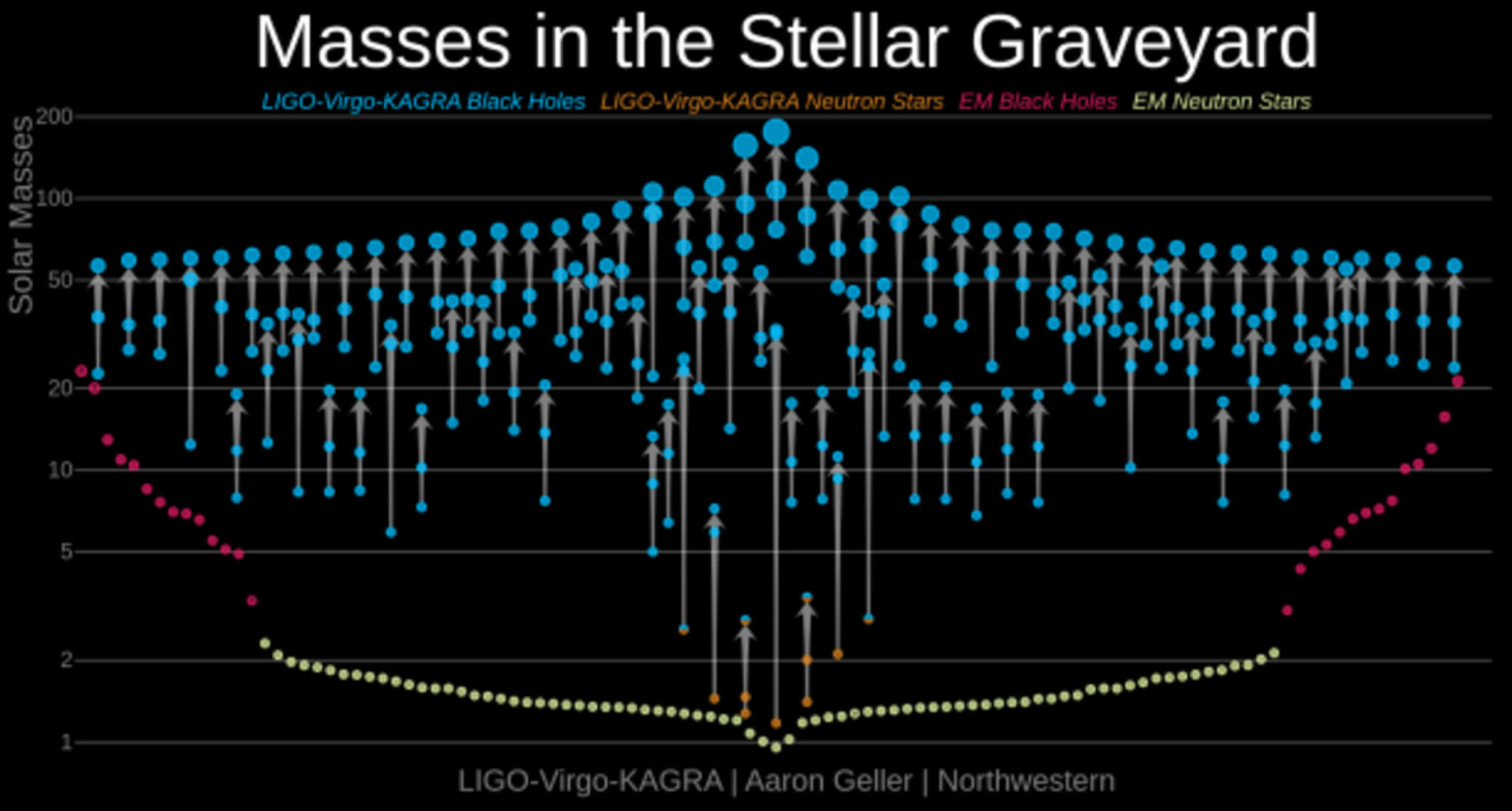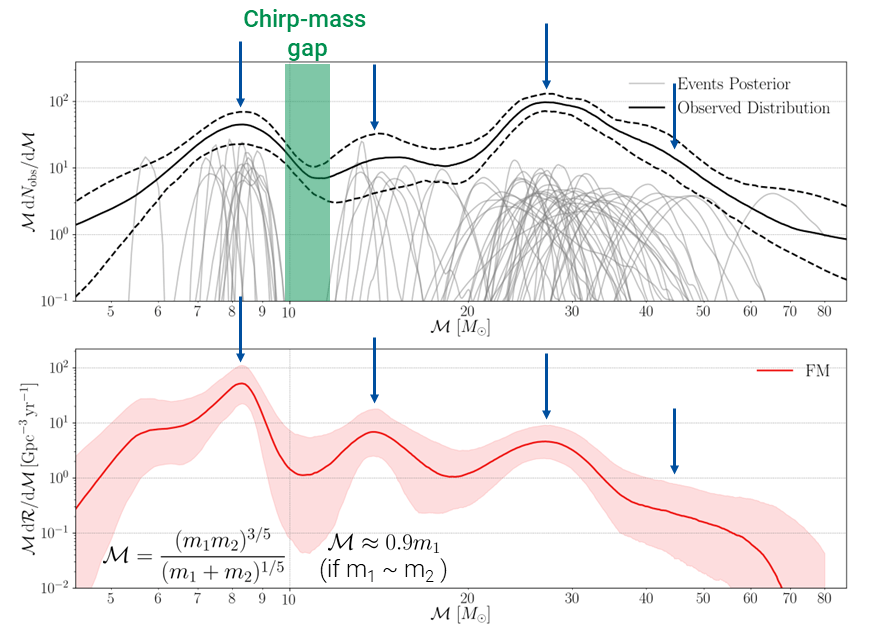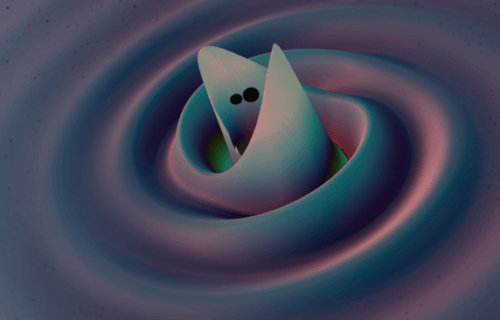HEIDELBERG, Germany — What sound does a black hole make? According to a team of international astronomers, they chirp!
The discovery of gravitational waves in 2015, first proposed by Albert Einstein a century ago, sparked a new era in gravitational wave astronomy. This monumental achievement subsequently won the 2017 Nobel Prize in Physics. As two black holes of stellar mass combine, they release gravitational waves with an increasing frequency known as the “chirp signal.”
By observing these signals, scientists can deduce a “chirp mass” – a complex mathematical formula representing the combined mass of the two merging black holes.

Until now, researchers believed merging black holes could possess any mass. However, a team’s models suggest some black holes might possess standard masses that produce consistent chirps.
“The existence of universal chirp masses not only tells us how black holes form,” says Fabian Schneider, who led the study at Heidelberg Institute for Theoretical Studies (HITS), in a media release. “It can also be used to infer which stars explode in supernovae.”
Researchers say the discovery offers valuable insights into the mysterious process of supernova, ambiguous nuclear and stellar physics and provides a fresh approach for scientists to observe the rapid cosmological expansion of the universe.
Understanding the ‘final fates’ of stars
Stellar-mass black holes, with masses ranging between 3-100 times that of our sun, are the final stage of massive stars. These stars, rather than exploding into supernovae, collapse to form black holes. The precursor stars, which eventually lead to merging black holes, typically form in pairs within binary star systems. Throughout their lifetimes, they undergo multiple episodes of mass exchange.
“The envelope stripping has severe consequences for the final fates of stars. For example, it makes it easier for stars to explode in a supernova and it also leads to universal black hole masses as now predicted by our simulations,” says Philipp Podsiadlowski from Oxford University, the study’s second author and currently Klaus Tschira Guest Professor at HITS.

The “stellar graveyard”, which is an assembly of the known masses of neutron-star and black-hole remnants of massive stars, is expanding rapidly due to enhanced gravitational-wave detection capabilities. The HITS team pointed out that there appears to be a pattern in the chirp masses of merging black holes. Evidence suggests that peaks emerge at roughly eight and 14 solar masses, aligning with the universal chirps predicted by their models.
Black holes beyond our galaxy
Since the initial discovery of merging black holes, it’s clear that there exist black holes with much larger masses outside our Milky Way. This is attributed to the different chemical compositions of these distant stars compared to our own galaxy. The HITS team discovered that irrespective of the chemical composition, stars that undergo envelope stripping in close binary systems tend to produce black holes of around nine and 16 solar masses, but very few with a mass in between.

In terms of merging black holes, these specific masses result in universal chirp sounds.
“When updating my lecture on gravitational-wave astronomy, I realized that the gravitational-wave observatories had found first hints of an absence of chirp masses and an overabundance at exactly the universal masses predicted by our models,” notes Schneider. “Because the number of observed black-hole mergers is still rather low, it is not clear yet whether this signal in the data is just a statistical fluke or not.”
The study was published in The Astrophysical Journal Letters.

